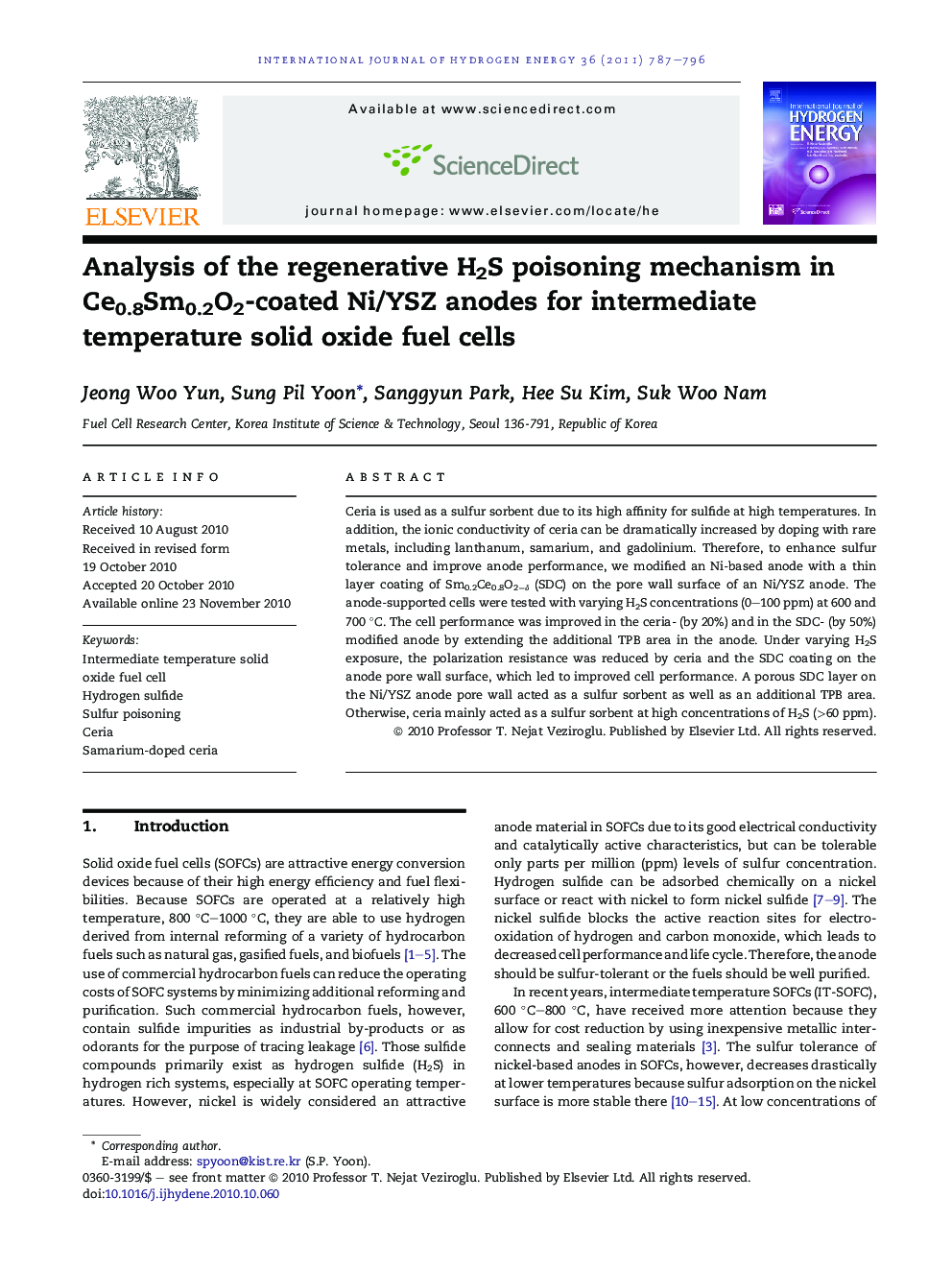| کد مقاله | کد نشریه | سال انتشار | مقاله انگلیسی | نسخه تمام متن |
|---|---|---|---|---|
| 1277835 | 1497592 | 2011 | 10 صفحه PDF | دانلود رایگان |

Ceria is used as a sulfur sorbent due to its high affinity for sulfide at high temperatures. In addition, the ionic conductivity of ceria can be dramatically increased by doping with rare metals, including lanthanum, samarium, and gadolinium. Therefore, to enhance sulfur tolerance and improve anode performance, we modified an Ni-based anode with a thin layer coating of Sm0.2Ce0.8O2−δ (SDC) on the pore wall surface of an Ni/YSZ anode. The anode-supported cells were tested with varying H2S concentrations (0–100 ppm) at 600 and 700 °C. The cell performance was improved in the ceria- (by 20%) and in the SDC- (by 50%) modified anode by extending the additional TPB area in the anode. Under varying H2S exposure, the polarization resistance was reduced by ceria and the SDC coating on the anode pore wall surface, which led to improved cell performance. A porous SDC layer on the Ni/YSZ anode pore wall acted as a sulfur sorbent as well as an additional TPB area. Otherwise, ceria mainly acted as a sulfur sorbent at high concentrations of H2S (>60 ppm).
Figure optionsDownload as PowerPoint slideResearch highlights
► H2S tolerance was enhanced by Ce0.8Sm0.2O2 coating on Ni/YSZ anode.
► H2S poisoning was reversible in Ce0.8Sm0.2O2-coated Ni/YSZ anode.
► The formation of Ce2O2S can be one explanation for increasing gas diffusion resistance.
Journal: International Journal of Hydrogen Energy - Volume 36, Issue 1, January 2011, Pages 787–796